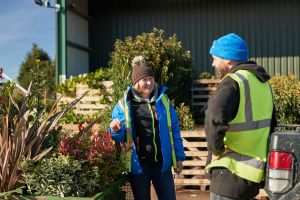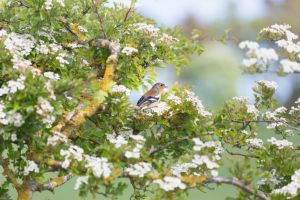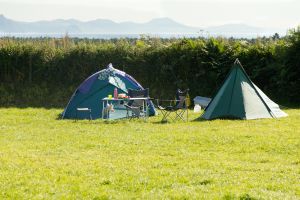Hedging: An environmental and ecological solution to Bio-diversity and Farm Diversity
How to diversify on a farm is a question on many farmers’ minds, due to the lack of subsidies and the drive to increase income via means other than the traditional farming methods employed for generations. Hedging has been integral to farms and farmland for centuries, defining land boundaries and providing soil stability, natural drainage and wind reduction whilst keeping animals and crops contained and protected.

However, hedging has many more uses which can aid in farm diversification projects, they are simple and affordable solutions as well as ecologically and environmentally friendly.
Hedging for wildlife
Native hedging is a popular and versatile choice. Naturalised to our climate, each UK species has been a part of our natural countryside heritage for hundreds of years, providing a rich and colourful tapestry throughout the seasons beneficial to people and wildlife alike.
Increasing bio-diversity is a key diversification initiative and native hedging provides food and shelter year-round for a myriad of insects, birds and mammals. Species like Hawthorn or Dog Rose feature stunning blossoms or flowers, which attract lots of pollinating insects and in turn many native bird species.

Birds will also use native hedges for nesting sites, shelter, or safety from predators, so helping the conservation of our native species. Additionally, small mammals will use hedgerows to seek food, shelter and protection and to move around larger areas safely.
In autumn, haws, fruits and berries provide an important food source for birds and mammals, or for people seeking foraging opportunities or the experience of making preserves or drinks from wild food. Native hedges are incredibly bio-diverse, changing throughout the seasons making them ideal for nature trails or farm schools where children and adults alike can experience the diverse seasonal attributes, identify bird and insect species and learn more about our native species and conservation.
Hedging for glamping/camping
Hedges are also an ideal way to facilitate a change of use for an area – create new boundaries, section-specific areas, or screen an area for privacy. For example, camping and glamping are hugely popular for a holiday or short break, whereas converted barns and outbuildings made into event venues or housing other businesses, can utilise hedging for functional or decorative purposes.

Evergreen hedges are ideal, as they provide attractive leaf cover year-round whilst minimising noise and reducing the effects of wind. Western Red Cedar or Cherry Laurel are fast growing for a quick solution, or species like Holly, Box or Euonymus are suitably slow growing if you are looking for a low maintenance or more decorative option.
Hedges Direct is the UK’s premier online hedging specialist stocking around 120 species with plant sizes from 10cm to 8m. We make buying, planting and growing hedges as easy as possible. With so many species, choosing the right hedge for your project can seem like a daunting task, but we’re here to help. Our team provide expert advice and bespoke pricing and will guide you through the whole journey, listening to your requirements and offering the best hedging solutions for your budget.
Contact the team today by calling 01257 498796 or email: helpdesk@hedgesdirect.co.uk
View Hedges Direct 'How Hedges Can Help Your Farm' online magazine here
- Log in to post comments

